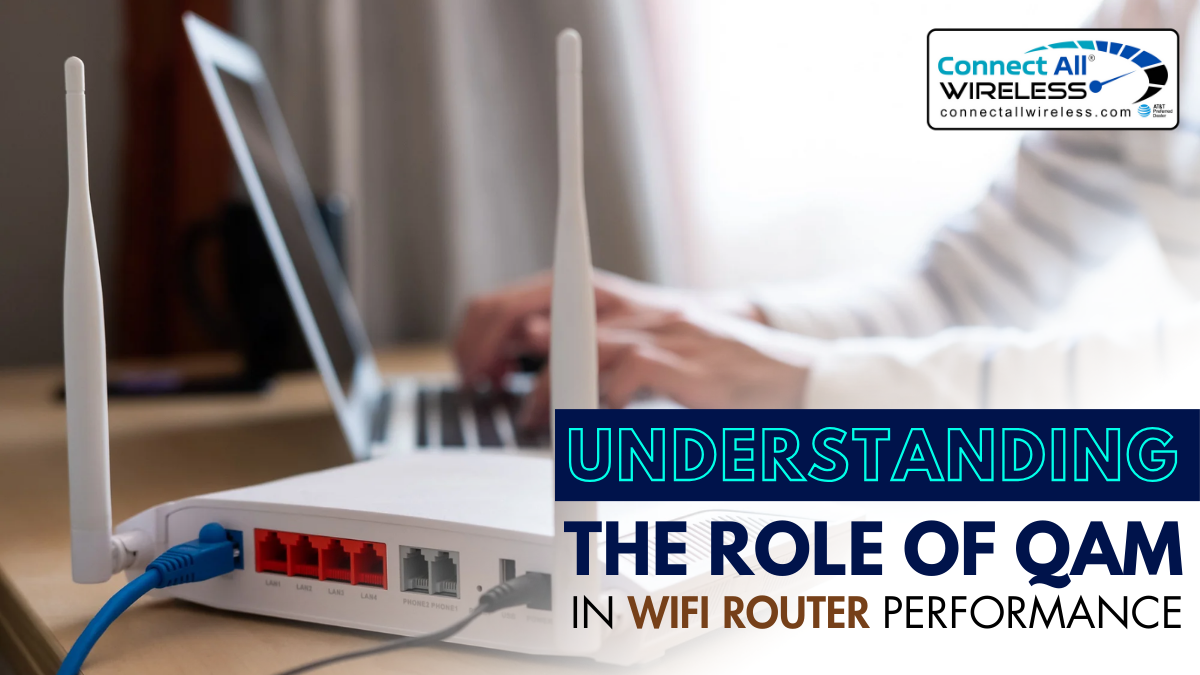Understanding the Role of QAM in WiFi Router Performance
March 29, 2024In the world of wireless technology, where seamless connectivity is paramount, understanding the intricacies of WiFi router performance is crucial. Among the many factors influencing router performance, one often overlooked but significant aspect is QAM (Quadrature Amplitude Modulation). QAM plays a pivotal role in determining the speed and reliability of wireless communication within a WiFi network. In this post, we’ll delve into what QAM is, how it works, and its impact on WiFi router performance.
What is QAM?
Quadrature Amplitude Modulation (QAM) is a modulation scheme used in digital communication to transmit data over radio waves. It’s a method of encoding digital data into a complex waveform for transmission. QAM works by varying two characteristics of a carrier wave—amplitude and phase—to represent different data symbols.
How Does QAM Work?
QAM works by modulating both the amplitude and phase of a carrier signal to encode digital information. In simpler terms, it changes the height and angle of the wave to represent binary data. The higher the number of bits represented per symbol, the more data can be transmitted in a given amount of time. QAM is often depicted graphically on a constellation diagram, where each point represents a unique combination of amplitude and phase, corresponding to a specific data symbol.
QAM and WiFi Router Performance
In the context of WiFi routers, QAM plays a crucial role in determining the speed and efficiency of data transmission. Modern WiFi standards, such as 802.11n, 802.11ac, and 802.11ax (Wi-Fi 6), utilize various QAM schemes to achieve higher data rates.
Impact of QAM on WiFi Speeds
The number of bits encoded per symbol (referred to as the modulation order) directly impacts the data rate supported by a WiFi connection. Higher modulation orders, such as 64-QAM or 256-QAM, allow for more data to be transmitted in each symbol interval, resulting in higher speeds. However, higher modulation orders also require a stronger signal-to-noise ratio (SNR) to maintain reliable communication. As a result, the achievable speed and range of a WiFi connection can vary based on factors like signal strength and interference.
Evolution of QAM in WiFi Standards
Over the years, WiFi standards have evolved to support increasingly higher modulation orders, leading to significant improvements in data rates and network performance. For instance, early WiFi standards like 802.11b and 802.11g primarily used lower-order QAM schemes like QPSK and 16-QAM, limiting their maximum speeds. However, with the introduction of 802.11n, 802.11ac, and now Wi-Fi 6 (802.11ax), higher-order QAM schemes like 64-QAM, 256-QAM, and even 1024-QAM have become commonplace, enabling faster and more efficient wireless communication.
Considerations for Router Selection
When choosing a WiFi router, understanding the QAM capabilities is essential for ensuring optimal performance. Routers supporting higher-order QAM schemes are capable of delivering faster speeds, particularly in environments with good signal quality. Additionally, it’s crucial to consider other factors such as antenna configuration, channel width, and overall network congestion to maximize WiFi performance.
Conclusion
In conclusion, grasping the significance of Quadrature Amplitude Modulation (QAM) in WiFi router performance is pivotal for optimizing connectivity. As we navigate the ever-evolving landscape of wireless technology, recognizing how QAM influences data rates and reliability is essential, especially for accessing the best 5G WiFi internet in Michigan. By understanding QAM’s role and selecting routers with advanced QAM capabilities, users can ensure they’re equipped with the necessary tools to enjoy fast, stable, and seamless connectivity in the digital age.


